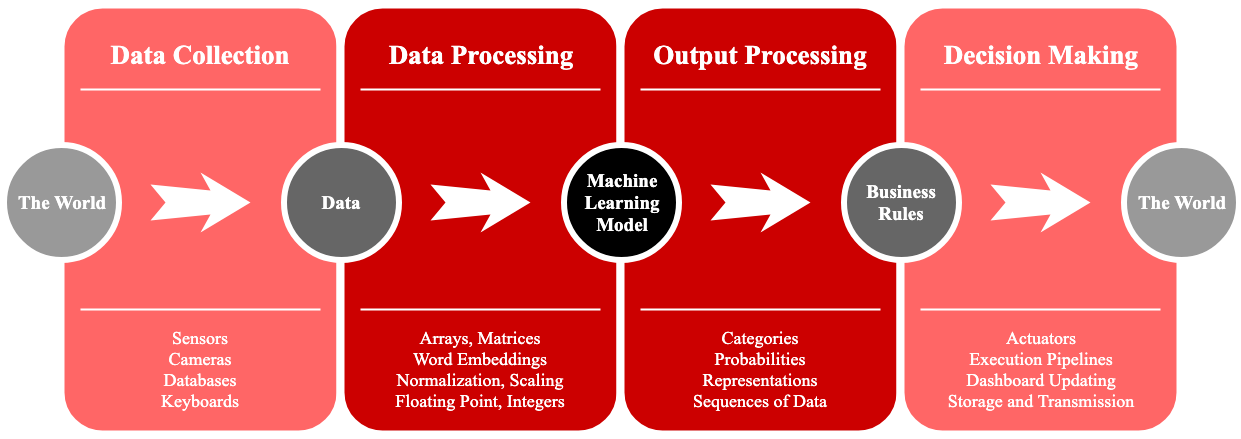From the typical ML application process depicted in Figure 1.1, you can see that ML has a broad range of applications. However, ML algorithms are only a small part of a bigger ecosystem with a lot of moving parts, and yet ML is transforming lives around the world today:

Deployed ML applications usually start with a process of data collection that uses sensors of different types, such as cameras, lasers, spectroscopes, or other types of direct access to data, including local and remote databases, big or small. In the simplest of cases, input can be gathered through a computer keyboard or smartphone screen taps. At this stage, the data collected or sensed is considered to be raw data.
Raw data is usually preprocessed before presenting it to an ML model. Raw data is rarely the actual input to ML algorithms...












































































